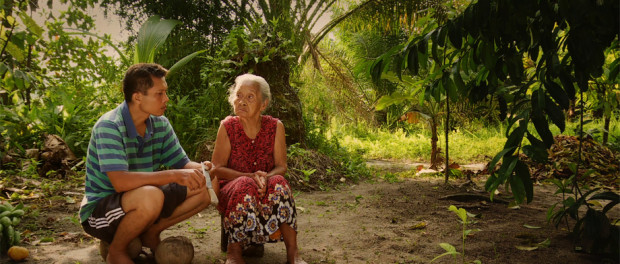The Look of Silence: The horrors of humanity
The killing of over a million people in 1965, when General Suharto was beginning to take power in Indonesia, is brought to life in this chilling documentary. The millions who were murdered were branded ‘Communists’ and thus their deaths were justified on the grounds of cleansing the country of communism. The Look of Silence is a visually and emotionally stunning documentary that tries to juxtapose the focus from victim to perpetrator to victim.
Led by the steady and unobtrusive hands of the interviewer Adi (whose brother was murdered by the military), this film makes discussion points of the inhumane murder of millions with the perpetrators of these crimes. The film questions what happened and why it happened.
The film’s images of loss and the mourning by the families and loved ones of the dead pierce you to the core of your humanity. Over a million died in that mass murder and even today the perpetrators continue to exert political authority in that country. In classrooms the military coup is taught to students as this act of great heroism, where the military killed traitors and saved the country. Any association with them or their living relatives is unacceptable.
Interestingly, a news item in the film shows a US TV network reporting on the ‘communist purge’ that was sweeping through the country in the mid to late 60s. The propaganda of that time was that this was the greatest defeat that communism had ever seen. American news agencies played up the ‘communist purge’ and how communism had been defeated in the greatest defeat seen in the world. Global geo-political rhetoric had no empathy for the loss of human life. I think even in the new century things haven’t changed much.
The film has interviews with living relatives of the gory and gruesome killing of people. From the slicing up of bodies, to peeling of skin, gouging of eyes, the brutal nature of the violence is smeared all over the documentary, which uses the frail body of one of the survivors as the metaphor of the ‘sole’ survivor.
The interviewer Adi constantly questions his subjects on what the violence and loss of over one million people meant. How many of the people remember the killings? Many have already forgotten about it, or don’t seem to want to remember it. And his being an ophthalmologist doesn’t seem like a coincidence at all. He goes around the towns helping people try out new lenses. We witness his meager attempts at clearing the fog from this past catastrophe that is just as big a part of the people’s psyche as it ever was.
The interviewees look into our souls as they stare down from their eyes, which bear only silence and nothing else in them.
After watching the film I found out that this is the second to an earlier film by Danish filmmaker Joshua Oppenheimer titled ‘The Act of Killing’. Time to go watch the first!
Once Upon a Kingdom
Preceding the feature documentary is an 18-minute short film by Raphaël J. Dostie and Terence Chotard called Once Upon a Kingdom (org fr. Un royaume deménagé). The film poignantly looks at the lives of the Sisters of Sainte Jeanne d’Arc (founded in 1914), who have served the Presbyterian Church for over a century. The film observes, powerlessly, as the remaining 82 sisters, who now battle old age and sickness, are slowly withering away with time. The beautiful cinematography and gently stirring film is a peek into the lives of people who have devoted their entire lives in the service of their faith and now face their mortal truth.
The Look of Silence and Once Upon a Kingdom are now playing together at Cinema du Parc.







